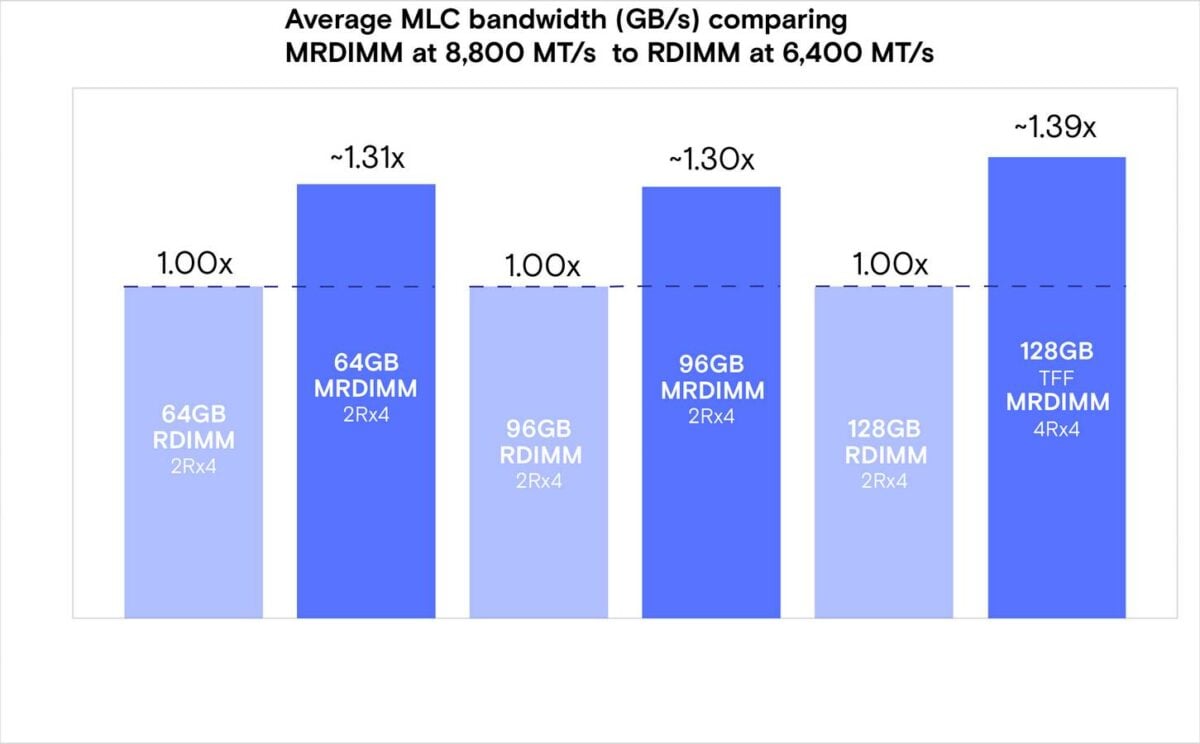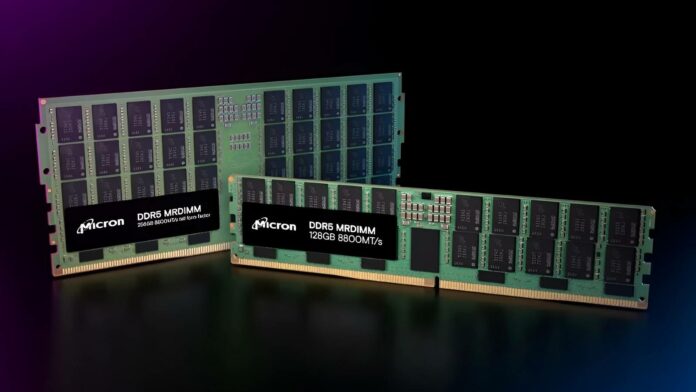Micron has unveiled a new memory format called MRDIMM, featuring a higher bandwidth and larger module capacity than current DDR5 standards. The idea is to offer more performance without requiring a complete system rebuild.
MRDIMM – standing for Multi-Rank Dual Inline Memory Module – is a new DDR5 memory format for servers and data centres. It is designed as a drop-in solution for existing and upcoming servers/HPCs, offering greater capacity and bandwidth.
To maintain compatibility with existing server platforms, Micron used RDIMM as a base for its design while pushing the density and speed to new heights. This way, clients can choose the best solution that suits their needs to keep a low TCO (Total Cost of Ownership). Micron has also worked closely with Intel to ensure good platform compatibility and reliability. The manufacturer plans to launch this technology later this year.

Aimed at high-performance computing and AI inferencing/training, the new MRDIMM modules deliver up to 8,800MT/s transfer rates. They also offer 39% higher bandwidth and up to 40% lower latency than RDIMM solutions. In addition to the bandwidth and latency that AI workloads crave, the MRDIMM DDR5 boasts larger capacities per module, reaching up to 256GB. Strange to think it’s now approaching the best SSDs in terms of space. These would be perfect for Intel’s upcoming 6th Gen Granite Rapids Xeon processors, which should support up to 8,800MT/s RAM.
Those who don’t need this much density can still go for lower capacities. 32GB, 64GB, 96GB, or 128GB per module all have the same bandwidth and latency benefits. Micron didn’t detail compatible platforms, though it seems like a fairly open solution that should work fine without much hassle. Don’t expect it in consumer PCs for a while, but it’s a sign that good things are on the horizon. We should get more information as the launch date approaches.


